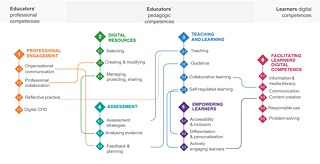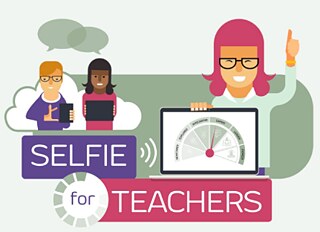Digital competence
Which digital competences do educators require today?

One thing is certain: we live in a world in which digital media play a major role. We communicate, obtain information, shop and play on the Internet and via social media. Digital media are indispensable in the working world, but their use in schools is still a matter of some controversy.
The German government has just decided to invest heavily in digital media in schools. This makes the question of how educators should approach this topic in future all the more pressing.
Digital pact for schools
Thanks to the five billion euro “Digital Pact for Schools” launched by the German parliament, schools in Germany will soon be better equipped with technology. Classrooms are to be provided with WiFi, new laptops and smartboards. Online platforms will foster “collaborative learning”.However, as the Federal Ministry of Education and Research is well aware: “No one medium alone makes for good education.” So once again it will be up to educators, who “will [have to] be well qualified to use digital media and teach digital competences.” [https://www.bmbf.de/de/wissenswertes-zum-digitalpakt-schule-6496.html]
If you enter the term “digital competence educators” in a search engine such as Google, you will be shown between 750,000 and 2.8 million results. So where should we begin?
EUROPEAN FRAMEWORK FOR THE DIGITAL COMPETENCE OF EDUCATORs
In 2017, the European Commission published the “European Framework for the Digital Competence of Educators” (DigCompEdu). Previously available only in English, it has now been translated into German by the Goethe-Institut.
“The European Framework for the Digital Competence of Educators aims to ensure that educators are able to assess their level of digital competence and thus identify their personal need for further training. In addition, it provides information about the digital competences that need to be passed on to the citizens of tomorrow. (…) It should go without saying that educators must also adapt to new circumstances in a world that is becoming increasingly digital. However, most of the competences to be acquired do not merely involve learning a new methodology; they actually challenge the traditional role of the educator itself. For no small number of educators, this poses an initial obstacle that they will need to overcome. Only once they have overcome this hurdle and are curious to learn and willing to embrace something new can the learning process begin. To reach this stage, it is essential for educators to realise that it is contemporary education for the next generation and the future of society that are at stake, and that one cannot resist this change in society.”
Educators are therefore called upon to assess and build upon their digital competences.
THE AREAS OF COMPETENCE DEFINED BY DIGCOMPEDU
DigCompEdu distinguishes between three areas of digital competence for teachers:- educators’ professional competences
- educators’ pedagogic competences
- learners’ competences.

The DigCompEdu self-assessment matrix is designed to enable educators to assess their degree of competence and better identify those areas in which they should further develop their competences.

To facilitate the self-assessment process, motivating role descriptors are proposed for the six different competence levels; these are based on the six proficiency levels (A1/A2/B1/B2/C1/C2) of the Common European Framework of Reference for Languages (GER):
Newcomers (A1) have had very little contact with digital tools and need guidance to expand their repertoire.
Explorers (A2) have started using digital tools without, however, following a comprehensive or consistent approach. Explorers need insight and inspiration to expand their competences.
Integrators (B1) use and experiment with digital tools for a range of purposes, trying to understand which digital strategies work best in which contexts.
Experts (B2) use a range of digital tools confidently, creatively and critically to enhance their professional activities. They continuously expand their repertoire of practices.
Leaders (C1) rely on a broad repertoire of flexible, comprehensive and effective digital strategies. They are a source of inspiration for others.
Pioneers (C2) question the adequacy of contemporary digital and pedagogical practices, of which they themselves are experts. They lead innovation and are a role model for younger teachers.
SELF-ASSESSMENT TOOLS
The DigCompEdu, of which only an older version is available to date in German, can be used to undertake a rapid self-assessment. A more up-to-date version is currently being prepared.
SELFIE is a free, user-friendly and adaptable tool that helps schools assess their current level in terms of learning in the digital age. SELFIE gathers – anonymously – the views of students, teachers and school leaders on how technology is used in their school.
SERVICES FOR German as a Foreign Language TEACHERS AT SCHOOLS ABROAD
How does the Goethe-Institut promote the digital competences of teachers of German abroad? Two examples:DIP IN SOE

EDDU
